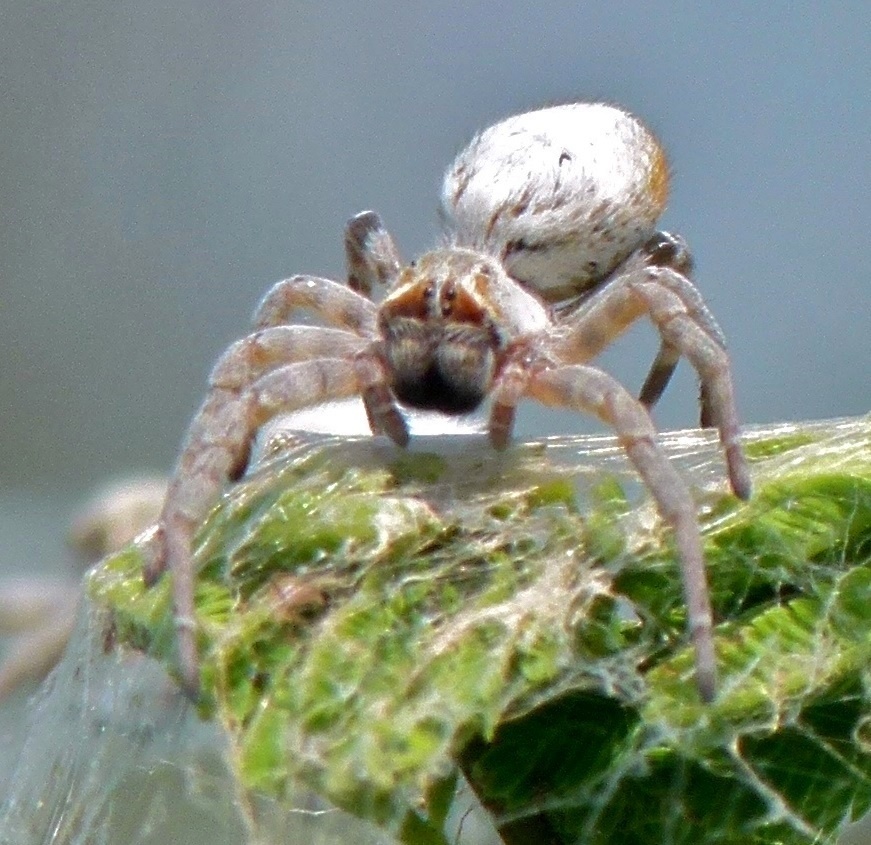Stegodyphus dumicola, commonly known as the African social spider, is a species of spider of the family Eresidae or the velvet spider family. It is native to Central and southern Africa. This spider is one of three Stegodyphus spiders that lives a social lifestyle (S. lineatus, S. mimosarum, S. dumicola). This spider has been studied living in large natal colonies (ranging from tens to hundreds of highly related spiders) in large, unkempt webs. Each colony is composed mainly of females, where a minority (forty percent) act as reproducers, and a majority (sixty percent) remain childless and take care of the young. Males live a shorter lifespan and will largely remain in the natal nest throughout its life. Females are known for extreme allomaternal care, since all females, even unmated virgin females will take care of the young until they are eventually consumed by the brood.
The Stegodyphus dumicola is one of only twenty to thirty spider species that is considered social. Sociality in spiders is defined as cooperative breeding in spiders that are non-territorial and permanently social. Although the Stegodyphus dumicola, mainly live-in groups, they have also been found to live solitarily. The Stegodyphus dumicola groups range from a few individuals to a few hundred spiders. They colonize, construct, and maintain the same web. They cooperate in childcare and gathering prey. Spiders will tend to live in the same colony they were born in, leading to a group that is made of several generations of related individuals. Foraging behavior has been observed to be equally divided amongst members of the colony.
Group foraging behavior varies between colonies of different size and composition. It is more likely that smaller colonies will initiate attack early and begin an attack more quickly than larger colonies. If a group has a wide range in spider behavior or boldness level personality types, the group was found to initiate a response more quickly to prey. If a group was made of spiders that were morphologically diverse (varying prosoma width), they also mounted a faster attack.
Within the large, webbed nest, several prey-capture regions are interspersed within housing tunnels. Spiders are compelled to retrieve snagged prey upon vibratory cues. The Stegodyphus dumicola have been found to follow a “shy” and a “bold” personality, where shy spiders are latent and do not respond to prey capture stimuli, and bold spiders are active and seek to forage. Smaller spiders tend to have a bold personality.


